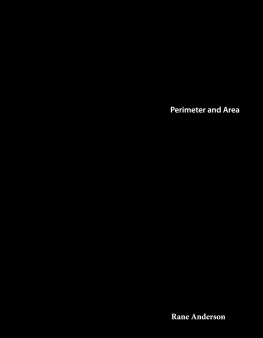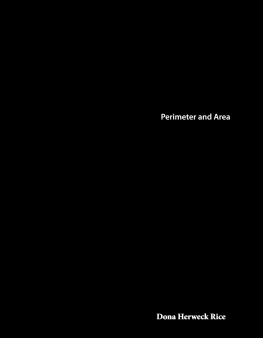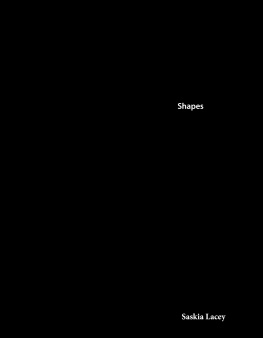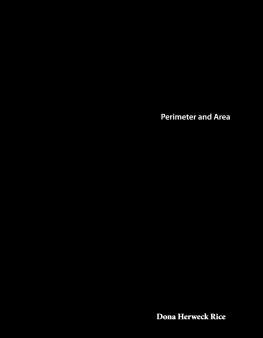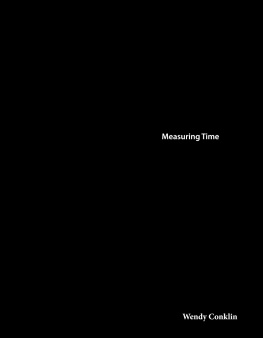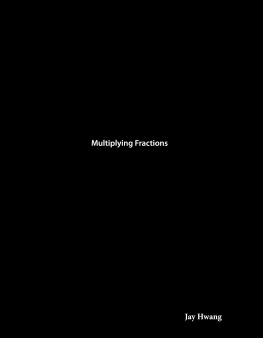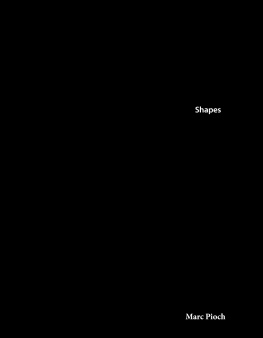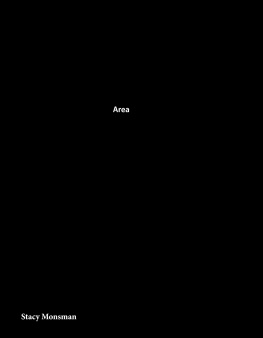Rane Anderson - Travel Adventures: The Grand Canyon: Data
Here you can read online Rane Anderson - Travel Adventures: The Grand Canyon: Data full text of the book (entire story) in english for free. Download pdf and epub, get meaning, cover and reviews about this ebook. year: 2017, publisher: Teacher Created Materials, genre: Children. Description of the work, (preface) as well as reviews are available. Best literature library LitArk.com created for fans of good reading and offers a wide selection of genres:
Romance novel
Science fiction
Adventure
Detective
Science
History
Home and family
Prose
Art
Politics
Computer
Non-fiction
Religion
Business
Children
Humor
Choose a favorite category and find really read worthwhile books. Enjoy immersion in the world of imagination, feel the emotions of the characters or learn something new for yourself, make an fascinating discovery.
- Book:Travel Adventures: The Grand Canyon: Data
- Author:
- Publisher:Teacher Created Materials
- Genre:
- Year:2017
- Rating:4 / 5
- Favourites:Add to favourites
- Your mark:
- 80
- 1
- 2
- 3
- 4
- 5
Travel Adventures: The Grand Canyon: Data: summary, description and annotation
We offer to read an annotation, description, summary or preface (depends on what the author of the book "Travel Adventures: The Grand Canyon: Data" wrote himself). If you haven't found the necessary information about the book — write in the comments, we will try to find it.
Travel Adventures: The Grand Canyon: Data — read online for free the complete book (whole text) full work
Below is the text of the book, divided by pages. System saving the place of the last page read, allows you to conveniently read the book "Travel Adventures: The Grand Canyon: Data" online for free, without having to search again every time where you left off. Put a bookmark, and you can go to the page where you finished reading at any time.
Font size:
Interval:
Bookmark:
0covercover.xhtmlTravel Adventures The grand canyon Data Rane Andersoncover3page0003page0003.xhtml44page0004page0004.xhtmlTable of Contents The Grand Canyon 4 The Journey Down 6 A Canyon Is Carved 10 Rock Stars, Rock Groups 14 Prehistoric Preserves 21 A Grand Trip 26 Problem Solving 28 Glossary 30 Index 31 Answer Key 3255page0005page0005.xhtmlThe Grand Canyon Imagine staring into a 6, 000-foot (1, 800-meter) canyon. It is a long way to the bottom. Luckily, those who want to explore Grand Canyon National Park are not limited to staring. There are many trails that wind from the top to the bottom. Some people make the trek on foot. Others go by mule. Either way, the long trip to the bottom offers many chances to learn. And many people want to make that trip! Millions of people visit the Grand Canyon each year. They travel from around the world to see the stunning views. The rocks of the canyon are a mosaic of colors. There are shades of red, orange, and brown. And with just one look, people wonder many things. How did this form? What is it made of? And, of course, how long does it take to get to the bottom and back to the top? Toroweap Point offers a majestic view of the Grand Canyon and Colorado River.66page0006page0006.xhtmlThe sun rises on the colorful canyon. let's Grand Canyon Visitors per Year Vis itor s Year77page0007page0007.xhtmlThe Journey Down Visitors have a choice when they are ready to make that trip to the bottom of the canyon. For hikers, there are challenging trails. Trails made in the walls of the canyon curve, twist, and stretch all the way to the floor. Other visitors saddle up! They enjoy a mule ride down to the bottom. Many parts of the trails are narrow and steep. But mules are surefooted animals. That means they have great balance. It is a safe, slow journey to the canyon floor. Riders travel in a mule train that is led by a wrangler. It takes many hours to reach the bottom by mule. So, riders spend the night there before heading back up to the top the next morning. Visitors ride mules up the South Kaibab Trail.88page0008page0008.xhtmllet's99page0009page0009.xhtmlA mule ride is a relaxing way to take in the Grand Canyon. But, there are also many trails for hiking. The Bright Angel Trail and the South Kaibab Trail are the two most common. Hiking the trails on foot can be hard. But, it has its charm, too. Hikers can stop whenever they want. They can view the beauty of the canyon at their own pace. Or, visitors can join a guided hike. A ranger walks along with the hikers. The ranger can point out the natural features of the canyon. Once at the bottom of the canyon, a hiker can rest or keep exploring. After all, there are new things to see. Or rather, there are old things that hikers are seeing for the first time! The Elves Chasm Gneiss (ELVES KAH-zum NICE) is the oldest rock in the canyon. It is part of the basement rocks because it sits below all other rocks.1010page0010page0010.xhtmllet's Approximate One-Way Trail Length Kilo met ers (km) Trails Bright Angel Hermit to Santa Maria Spring South Kaibab Grand View to Horseshoe Mesa Grand View to Coconino Saddle1111page0011page0011.xhtmlA Canyon Is Carved Journeys in the canyon begin and end at the top. From the top, some people say the Grand Canyon looks like a huge hole in the ground. Imagine the hole gets filled with dirt, sand, and rocks. Now, the top of it looks as flat as a pancake. This is what the region looked like when the Grand Canyon began to form. It was a huge stretch of flat land. And that land was made up of layer upon layer of rocks. Scientists know that a powerful force had to cut through those layers of rock. That force was water. The Colorado River flowed down from the nearby mountains and crossed the flat land. The river then began to carve into the land. Millions of years passed. All the while, the mighty flow of the river kept cutting away the rock. And bit by bit, the canyon grew deeper.1212page0012page0012.xhtmlThe oldest rocks are at the bottom of the canyon.1313page0013page0013.xhtmlA rugged rock pile makes an interesting formation on the South Kaibab Trail. Snowmelt is another source of water in the canyon.1414page0014page0014.xhtmlThe Colorado River did not form the canyon by itself. Wind and rain cause rocks to wear down and break into small pieces. These pieces are called sediment. The wind and water move and carry it away. This process is called erosion. A hiker who looks closely might notice cracks in the rocks. After a winter rain, water can freeze inside those cracks. Ice takes up more space than water. So, the cracks widen. The ice can even split the rocks. When it gets warmer, the ice melts back into water. This water carries away more sediment. All of these forces work to change the canyon. So far, it has a depth of over 1 mile (1. 8 km), a width of 11 mi. (18 km), and a length of 270 mi. (430 km). But the process continues. It keeps growing, little by little.1515page0015page0015.xhtmlRock Stars, Rock Groups Geologists are the rock stars of science! No, really they study rocks and soil. Rocks tell stories about Earth and its history. At the Grand Canyon, geologists explore and write what they see. If they find a new type of rock, they describe it. Then, they add it to a map. The map shows where to find different types of rock. All of the data that scientists have gathered helps them sort rock layers into groups. Each group gets a name. Geologists use tools to help them study the canyon. One such tool is a cross-section. Cross-sections are drawings that show what the inside of something looks like. Layers of canyon rocks show a real-life cross-section.1616page0016page0016.xhtmlA cross-section drawing shows the major rock layers of the Grand Canyon. Layered Paleozoic Rocks Grand Canyon Supergroup Rocks Vishnu Basement Rocks1717page0017page0017.xhtmlEach layer of rock holds clues about the Grand Canyons past. These clues track changes in the environment that happen over time. These small changes can add up. They result in big transformations. The spot where an ocean exists now may one day become a desert. It took millions of years for these rock layers to form.1818page0018page0018.xhtmlBut do not plan on seeing an ocean dry up overnight! It is a slow process. It takes millions of years for a change like that to take place. When it does happen, the rocks that form will change, too. Imagine an ocean slowly drying out and becoming a desert. Then, desert rocks start to form. They form on top of the older ocean rocks. This is why so many types of rocks can be found in the Grand Canyon. The environment has changed many times over the years. New rocks have been placed on top of the older rocks each time.1919page0019page0019.xhtmlSome rocks are formed one layer at a time. Sedimentary rocks build on top of themselves. So, hiking into the Grand Canyon is like stepping back in time. The youngest rocks are at the top. The rocks get older the farther down you go. There are three main sedimentary rock groups that are found in the Grand Canyon. But, these rock groups dont play music. They give geologists clues about the canyons past. Limestone forms in warm, shallow seas where living things thrive. Sandstones name gives you a big clue about how its formed. It forms in sandy places, like deserts or near beaches. Shale forms in seas where living things grow in mud on the sea floor. All of these environments are part of the Grand Canyons past. sandstone limestone shale2020page0020page0020.xhtmllets Grand Canyon Rock Layer Thickness Feet (ft.) Type of rock Coconino Sandstone Redwall Limestone Muav Limestone Bright Angel Shale2121page0021page0021.xhtmlA dead animal starts to decompose. Its skeleton slowly becomes buried. Eventuallly, the skeleton becomes part of the rock.2222page0022page0022.xhtmlPrehistoric Preserves Rocks made from sand and dust might not sound too special. After all, sedimentary rocks can be found everywhere. Plants live in them. Creatures build their homes in them, walk on them, and find food in them. But, these living things can also die in them. Sometimes, when a creature or plant dies, other living things eat it. Other times, sediment buries it. When this happens, a part of it gets preserved. The soft parts of it will usually decompose. But the hard parts, like its bones and teeth, do not. So, the remains can be preserved. And as time goes on, the sediment will harden. It will slowly turn into rock. The hard parts of living things will become part of the rock, too. These are called fossils. In the Grand Canyon, very old animal tracks can be found in sandstone layers. Fossils of plants can be found in layers of shale. The rocks and their fossils tell more stories about the plant and animal life of the canyon. The bones of this prehistoric fish dissolved into rock to form a fossil.2323page0023page0023.xhtmlFossil Finds The world is filled with millions of plant and animal species. Each thrives in certain places on Earth. And, as fossils, they can be found in the type of rock that formed where they died. With all of its layers of rocks, the Grand Canyon is packed with fossils. Sea fossils are very common in the Grand Canyon. This is because sea environments formed many of the layers of rock. Extinct animals called trilobites (TRIGH-luh-bites) used to crawl around on the muddy sea floor. They had huge eyes. And they could roll into tight balls. Their fossils can be found in the sandstone, limestone, and shale layers of the Grand Canyon. There were other ancient sea animals, too. Horn corals did not crawl. Instead, they stuck to the soft sea floor. There, they waited for food to float by. Then, they used their tentacles to stun and grab prey. Horn coral fossils are found in limestone. horn coral fossil2424page0024page0024.xhtmltrilobite fossil This is what a trilobite might have looked like millions of years ago.2525page0025page0025.xhtmlCrinoid (KRY-noid) fossils can be found in the limestone layers of the Grand Canyon. They look like they are made of small, round discs that sit one on top of the other. The animals that formed these fossils had parts that anchored them to the sea floor. Those same parts also acted as feet. This helped them collect food and move from place to place. Brachiopods (BRAY-kee-e-pads) are also found in the limestone layers. They lived on the sea floor, too. Each of these animals lived inside of two shells that could close tightly. They had strong muscles that helped their shells open and close. crinoid fossil Living crinoids look like this and still exist today.2626page0026page0026.xhtmlsidebar brachiopods brachiopod fossils2727page0027page0027.xhtmlA Grand Trip The Grand Canyon is so much more than just a huge hole in the ground. President Theodore Roosevelt once said it has a natural wonder. [ It is ] unparalleled throughout the rest of the world. It also holds a key to Earths past. Oceans can dry up. Deserts can vanish. But nature records what happens. The Grand Canyon's fossils and rocks tell the story of big changes from many years ago.2828page0028page0028.xhtmlThe Grand Canyon brings out the scientist in each of its visitors. They can hunt for fossils. They can see the many layers of rocks. The canyon is more than just awesome scenery. It is more than just a place for geologists to study. It is a place to explore and enjoy. Theodore Roosevelt hikes down Jacobs Ladder on Bright Angel Trail.2929page0029page0029.xhtmlProblem Solving A new group of visitors is ready to saddle up and ride. Five mules, Arrow, Joo Joo, Lottie, Owl, and Pups, will lead them down the Bright Angel Trail. Once they get to the bottom of the Grand Canyon, everyone will rest. They will spend the night at the famous Phantom Ranch. The next morning, they will head back up the South Kaibab Trail on the same mules. Use the graph and table to answer the questions about the trip. 1. About how many total kilometers will the visitors ride? 2. About how many total kilometers will all five of the mules travel on this trip? 3. This trek adds one more round-trip to each mules record. Make a new frequency table to show how many round-trips the mules have completed. 4. Use the new frequency table to answer the following questions : a. How many round-trips has Owl made? b. About how many total kilometers has Joo Joo traveled? c. How many more round-trips will Arrow have to make to have two times as many as Lottie?3030page0030page0030.xhtmlApproximate One-Way Trail Length Kilo met ers (km) Trails Bright Angel Hermit to Santa Maria Spring South Kaibab Grand View to Horseshoe Mesa Grand View to Coconino Saddle Mule Round-Trips Arrow Joo Joo Lottie Owl Pups3131page0031page0031.xhtmlGlossary cross-section a view that shows what the inside of something looks like after it's been cut decompose to slowly break down environment the natural world erosion movement of weathered rock and sediment fossil dead plants and animals that have been preserved in rocks geologists scientists who study rocks and soil to learn about Earth's history preserved kept in its original state or in good condition sediment very small pieces of rock, such as sand, gravel, and dust species groups of animals or plants that are similar and can produce young animals or plants wrangler a person who takes care of horses, mules, or cattle3232page0032page0032.xhtmlIndex brachiopods, Bright Angel Trail, Colorado River, crinoids, cross-section, Elves Chasm Gneiss erosion, fossil, geologists, Grand Canyon Supergroup Rocks, horn corals, Jacob's Ladder, Layered Paleozoic Rocks, limestone, mule, Phantom Ranch, Roosevelt, Theodore, sandstone, sedimentary rocks, shale, South Kaibab Trail, Toroweap Point, trilobites, Vishnu Basement Rocks,3333page0033page0033.xhtmlAnswer Key Let's Explore Math page 5 : 1. 2015 2. about 1, 100, 000 more visitors in 2015 3. about 500, 000 more visitors in 2014 4. 200, 000 visitors page 7 : 1. 5 more round-trips 2. 1 fewer round-trip 3. 37 round-trips total page 9 : 1. Bright Angel; about 30 km 2. Grand View to Horseshoe Mesa; the bar is higher 3. Grand View to Coconino Saddle and Hermit to Santa Maria Spring 4. 2 km page 19 : 1. Redwall Limestone 2. Muav Limestone and Bright Angel Shale 3. 200 ft. page 25 : 1. Crinoids; 12 2. Brachiopods and trilobites; 6 of each 3. Crinoids Problem Solving 1. about 26 km 2. about 130 km 3. Frequency tables should show Arrow with 11 tally marks, Joo Joo with 10 tally marks, Lottie with 7 tally marks, Owl with 8 tally marks, and Pups with 6 tally marks. 4. a. 8 round-trips b. 260 km c. 3 more round-trips3434page0034page0034.xhtmlMath Talk 1. What are three types of graphs that can be used to display data? 2. How are bar graphs and line graphs similar? How are they different? 3. What is the best way to display data that includes numbers? What is the best way to display data that includes words? 4. Why is each part of a graph important? 5. Why do people use graphs to display data? 6. How can you determine whether a graph is displaying data accurately and fairly?3535page0035page0035.xhtmlTravel adventures the grand canyon Data Saddle up and take a journey to the bottom of the Grand Canyon. By foot or by mule, a visitor can examine geological clues found in rocks and fossils. Analyzing data can help to tell the story of the Grand Canyon, too. Find out why it is a grand place to explore! Measurement and Data36
Next pageFont size:
Interval:
Bookmark:
Similar books «Travel Adventures: The Grand Canyon: Data»
Look at similar books to Travel Adventures: The Grand Canyon: Data. We have selected literature similar in name and meaning in the hope of providing readers with more options to find new, interesting, not yet read works.
Discussion, reviews of the book Travel Adventures: The Grand Canyon: Data and just readers' own opinions. Leave your comments, write what you think about the work, its meaning or the main characters. Specify what exactly you liked and what you didn't like, and why you think so.




